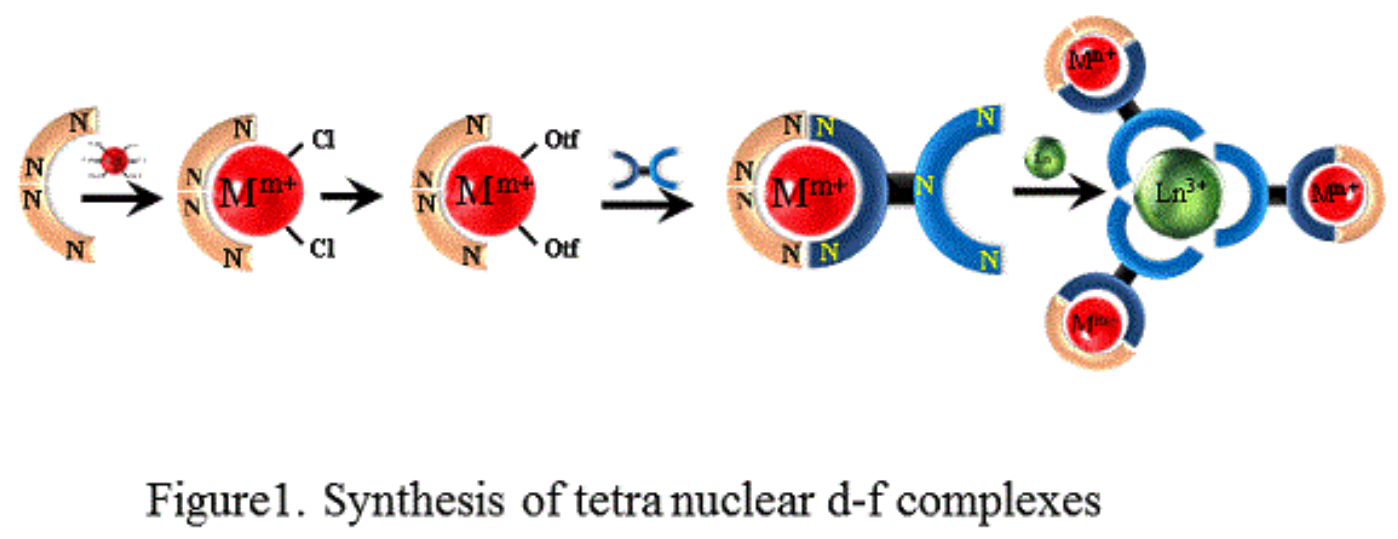Rational design of tetranuclear d-f complexes with ditopic Janus-type aromatic ligands
Ditopic ligands have been recently attracted much attention since they open novel possibilities and perspective in coordination chemistry and material science [1]. Ditopic ligands containing two separate bidentate and tridentate binding units are well-suited because of their unique physicochemical properties [2]. In this study, new synthetic strategies have been exploited for the preparation of tetra nuclear complexes containing d and f block metal ions (Figure 1). The first synthetic step consists of the preparation of preorganized ditopic Janus-type ligands [3] followed by the coordination of transition metal ion with the bidentate site. Further reaction of the complex with labile nine-coordinated Ln(III) results in the formation of the targeted tetranuclear d-f complexes (Figure 1). In this contribution, chemical requirements and design favoring the formation of the tetranuclear d-f complex will be presented.

[1] Boris I. Kharisov , Perla Elizondo Martínez , Víctor M. Jiménez-Pérez , Oxana V. Kharissova , Blanca Nájera Martínez, Nancy Pérez, Journal of Coordination Chemistry, 2010, 63, 1-25.
[2] Michael D. Ward, Journal of Coordination Chemistry, 2007,251, 1663-1677.[3] Neelima V. Nair, Rongwei Zhou, Randolph P. Thummel, Inorganica Chimica Acta, 2017, 454, 27-39.